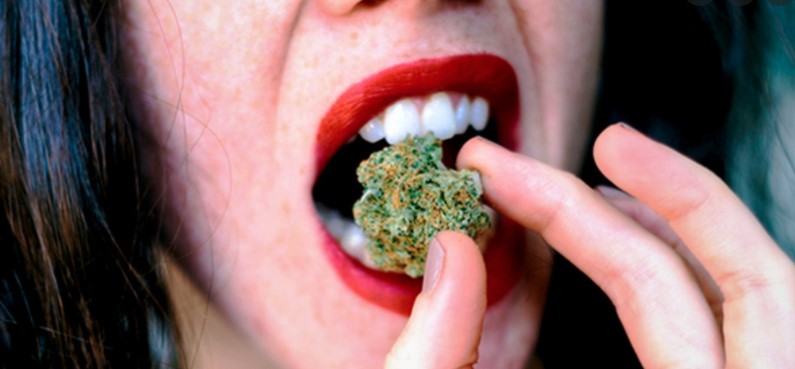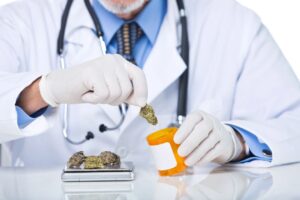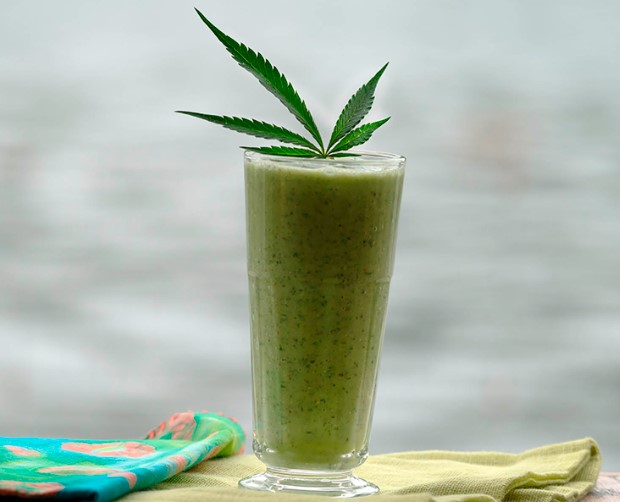Curious about eating weed raw? Dive into our comprehensive guide exploring the truth behind consuming raw cannabis. Discover if it induces psychoactive effects or provides health benefits. Let’s separate myths from reality in this in-depth exploration..
Table of Contents
Understanding the Chemistry Behind Eating Weed Raw
Dispelling the Myth: Can You Get High from Eating Weed Raw?
The Therapeutic Potential of Raw Cannabis
The Role of Terpenes and Flavonoids in Raw Cannabis
How to Incorporate Raw Cannabis into Your Diet
Precautions When Eating Weed Raw
Conclusion
Understanding the Chemistry Behind Eating Weed Raw
Before we dive into the effects of consuming raw cannabis, let’s understand the chemistry behind it. Raw marijuana contains a non-psychoactive compound known as tetrahydrocannabinolic acid (THCA). Unlike its counterpart, tetrahydrocannabinol (THC), THCA does not produce the intoxicating effects typically associated with cannabis.
During the growth of cannabis plants, they produce THCA. However, this compound needs to undergo a process called decarboxylation to convert into THC, which is responsible for the euphoric high. Decarboxylation occurs when heat is applied to the plant material, such as through smoking or baking. This process activates the THC and allows it to bind with the cannabinoid receptors in the body, leading to the psychoactive effects.
Dispelling the Myth: Can You Get High from Eating Weed Raw?
The answer is no, eating raw weed will not get you high. Raw cannabis contains THCA, which does not have the ability to bind to the cannabinoid receptors in the same way THC does. As a result, consuming raw cannabis will not produce the desired psychoactive effects.
While some individuals claim to feel a slight buzz or mild effects from eating raw weed, the amount you would need to consume is significantly higher compared to other consumption methods. In fact, you would need to ingest a substantial amount of raw cannabis, typically an eighth of top-shelf bud, just to feel any noticeable effects. This makes it an inefficient and unappetizing method of getting high.
The Therapeutic Potential of Eating Weed Raw
Although eating raw weed may not produce a high, it does offer potential therapeutic benefits. Raw cannabis contains a variety of compounds, including cannabinoids, terpenes, flavonoids, and other beneficial phytochemicals. These compounds may contribute to various health benefits when consumed in their raw form.
1. Cannabinoids and Neuroprotective Effects
Research suggests that THCA, the primary cannabinoid in raw cannabis, may have neuroprotective properties. A study published in the British Journal of Pharmacology demonstrated that THCA has a protective effect on brain cells. This finding is significant for individuals with neurodegenerative conditions, such as Alzheimer’s disease and Parkinson’s disease, as THCA could potentially slow down the progression of these conditions.
2. Anti-Inflammatory and Pain-Relieving Properties
Both THCA and CBDA (cannabidiolic acid) found in raw cannabis have been shown to possess anti-inflammatory properties. These compounds may help reduce inflammation and alleviate pain associated with conditions such as arthritis and multiple sclerosis. Additionally, their anti-inflammatory effects may have implications for overall health and wellness.
3. Anti-Nausea and Anti-Vomiting Effects
THCA has demonstrated potential as an antiemetic, meaning it may help reduce nausea and vomiting. A study in the British Journal of Pharmacology found that THCA was effective in reducing these symptoms in rats. Furthermore, it suggested that THCA could be a more potent alternative to THC in the treatment of nausea and vomiting. While more research is needed to confirm these effects in humans, it is an area of interest for medical professionals.
4. Antioxidant and Anti-Cancer Properties
Raw cannabis is rich in antioxidants, such as flavonoids and other phytochemicals. These compounds help protect the body against oxidative stress, which can contribute to various diseases and conditions. Additionally, some research suggests that THCA may have anti-cancer properties and could potentially inhibit the growth and spread of certain types of cancer cells. However, more studies are required to fully understand the potential benefits in this regard.
5. Nutritional Value
Raw cannabis is surprisingly nutritious, containing vitamins, minerals, and fiber. It is a good source of vitamins C and K, which support immune function and blood clotting, respectively. Additionally, it provides essential minerals like calcium, iron, and folate, necessary for bone health, blood production, and DNA repair. The presence of fiber in raw cannabis promotes a healthy digestive system.
Further Reading:
- “Tetrahydrocannabinolic acid is a potent PPARγ agonist with neuroprotective activity.”
- Eubanks LM, et al. (2006)
- This study explored the potential neuroprotective properties of tetrahydrocannabinolic acid (THCA), the non-psychoactive compound in raw cannabis. The study found that THCA showed neuroprotective effects, which might be relevant to certain neurodegenerative conditions.
- Link to the study
- “Cannabidiolic acid, a major cannabinoid in fiber-type cannabis, is an inhibitor of MDA-MB-231 breast cancer cell migration.”
- Takeda S, et al. (2008)
- This study investigated the effects of cannabidiolic acid (CBDA), another compound found in raw cannabis, on breast cancer cell migration. The study suggested that CBDA might have potential anti-cancer properties.
- Link to the study
The Role of Terpenes and Flavonoids in Raw Cannabis
Terpenes and flavonoids are two groups of compounds found in raw cannabis that contribute to its unique aroma, taste, and potential therapeutic effects. Terpenes are responsible for the distinct smells associated with different cannabis strains, while flavonoids provide the vibrant colors found in the plant.
These compounds have been shown to have various health benefits and can potentially enhance the effects of cannabinoids. For example, terpenes such as limonene and myrcene have calming and relaxing properties. Flavonoids, such as cannflavin A and cannflavin B, have been studied for their potential anti-inflammatory, antimicrobial, and anti-cancer properties.
When consuming raw cannabis, you have the advantage of preserving these beneficial terpenes and flavonoids since they are volatile and can degrade with heat exposure.
How to Incorporate Raw Cannabis into Your Diet
If you are interested in reaping the potential health benefits of raw cannabis, there are several ways to incorporate it into your diet. Here are some ideas:
1. Juicing
Juicing raw cannabis is a popular method as it allows you to consume the plant’s nutrients without the fibrous material. Use a juicer to extract the juice from cannabis leaves, buds, or a combination of both. You can mix the cannabis juice with other fruit or vegetable juices to improve the taste.
2. Smoothies
Blend raw cannabis leaves or buds with your favorite fruits and ice to create a nutritious and refreshing smoothie. The combination of flavors can help mask the taste of raw cannabis.
3. Salads
Add chopped raw cannabis leaves to your salads for an extra nutritional boost. Combine them with other greens, vegetables, and toppings of your choice to create a flavorful and healthy dish.
4. Sprinkling on Foods
If you can tolerate the taste, you can sprinkle finely chopped raw cannabis buds or leaves on top of your favorite dishes. This method allows you to incorporate raw cannabis into your meals without altering the flavors significantly.
Precautions When Eating Weed Raw
While raw cannabis may offer potential health benefits, there are a few precautions to keep in mind:
- Choose Organic and Trusted Sources: Make sure to obtain raw cannabis from reputable sources that use organic farming practices. This reduces the risk of exposure to harmful pesticides or contaminants.
- Start with Small Amounts: If you are new to consuming raw cannabis, start with small amounts to gauge your tolerance and sensitivity. Gradually increase the quantity as needed.
- Consider Individual Sensitivities: Some individuals may have sensitivities or allergies to cannabis. If you experience any adverse reactions, such as digestive issues or skin irritation, discontinue use and consult a healthcare professional.
- Consult with a Healthcare Professional: If you have any underlying health conditions or are taking medications, it is important to consult with a healthcare professional before incorporating raw cannabis into your diet. They can provide personalized guidance based on your specific needs and circumstances.
The Bottom Line: The Potential of Raw Cannabis
While eating raw weed may not get you high, it offers potential therapeutic benefits due to the presence of cannabinoids, terpenes, flavonoids, and other beneficial compounds. From neuroprotective effects to anti-inflammatory properties, raw cannabis may contribute to overall health and wellness. Incorporating raw cannabis into your diet through juicing, smoothies, salads, or sprinkling can be a nutritious and enjoyable way to explore its potential benefits. As with any dietary change, it is important to listen to your body, start with small amounts, and consult with a healthcare professional if needed.





